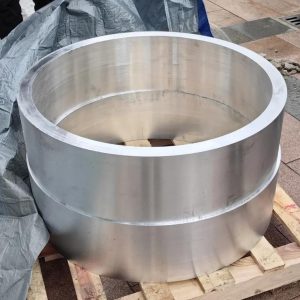Aluminum Forging: Processes and Applications
PUBLISH TIME: July 12, 2025 AUTHOR: Quick Machine VISIT: 147
1. Introduction to Aluminum Forging
Aluminum forging involves shaping metal using compressive forces, typically with hammers or presses. The 6000 and 7000 series alloys are most commonly forged due to their excellent strength-to-weight ratios and corrosion resistance.
2. Key Forging Methods
2.1 Closed-Die Forging
- Produces near-net-shape components
- Requires precise die design
- Common for automotive suspension parts
2.2 Open-Die Forging
- Used for larger, simpler shapes
- Allows grain flow optimization
- Typical for aerospace structural components
2.3 Ring Rolling
- Specialized for circular parts
- Creates seamless rings for bearings and flanges
- Energy-efficient process
3. Technical Advantages
- Superior Mechanical Properties: Forged aluminum exhibits 20-30% higher strength than cast equivalents
- Material Efficiency: 90-95% material utilization rate
- Enhanced Fatigue Resistance: Directional grain structure improves durability
4. Industry Applications
- Aerospace: Landing gear, engine mounts
- Automotive: Wheel hubs, control arms
- Defense: Missile components, armor plating
- Industrial: Valve bodies, hydraulic parts
5. Recent Technological Advances
- Computer-aided die design simulations
- Isothermal forging for complex geometries
- Robotics integration in post-forging operations
6. Quality Control Standards
- ASTM B247 material specifications
- Non-destructive testing methods:
- Ultrasonic inspection
- Penetrant testing
- X-ray analysis
7. Environmental Considerations
- Aluminum’s 100% recyclability
- 95% energy savings compared to primary production
- Closed-loop water systems in modern forges

Quote Now to Start Your CNC Machining Project
From raw material control to product inspection, we always adhere to the pursuit of excellent quality and deliver impeccable results for you. All information and uploads are secure and confidential.
Contact Now